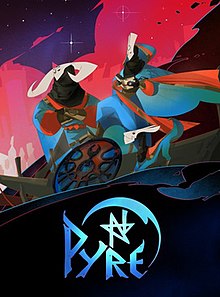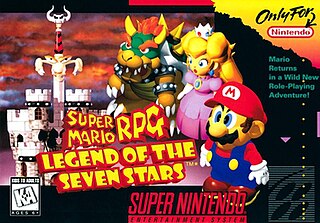
Super Mario RPG: Legend of the Seven Stars is a 1996 role-playing game developed by Square and published by Nintendo for the Super Nintendo Entertainment System (SNES). It was the final Mario game published for the SNES. The game was directed by Chihiro Fujioka and Yoshihiko Maekawa, produced by Shigeru Miyamoto, and scored by Yoko Shimomura.
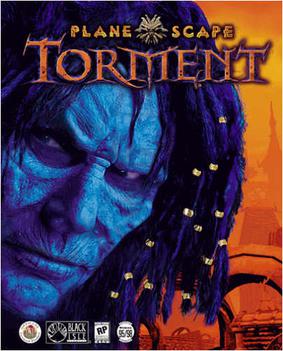
Planescape: Torment is a 1999 role-playing video game developed by Black Isle Studios and published by Interplay Entertainment for Windows. The game takes place in locations from the multiverse of Planescape, a Dungeons & Dragons (D&D) fantasy campaign setting. The game's engine is a modified version of the Infinity Engine, which was used for BioWare's Baldur's Gate, a previous D&D game set in the Forgotten Realms.

Fallout 2: A Post Nuclear Role Playing Game is a 1998 role-playing video game developed by Black Isle Studios and published by Interplay Productions. It is a sequel to Fallout (1997), featuring similar graphics and game mechanics. The game's story takes place in 2241, 80 years after the events of Fallout and 164 years after the atomic war which reduced the vast majority of the world to a nuclear wasteland. The player assumes the role of The Chosen One, the grandchild of the first game's protagonist, and undertakes a quest to save their small village on the West Coast of the United States.

Paper Mario: The Thousand-Year Door is a 2004 role-playing game developed by Intelligent Systems and published by Nintendo for the GameCube. The Thousand-Year Door is the second game in the Paper Mario series following Paper Mario, and is part of the larger Mario franchise. In the game, when Mario and Princess Peach get involved in the search for a mystic treasure that holds great fortune, Peach is kidnapped by an alien group called the X-Nauts; Mario sets out to find the treasure and save the princess.

Meteos is a 2005 tile-matching video game developed by Q Entertainment and published by Bandai for the Nintendo DS. It was produced by Q Entertainment founder Tetsuya Mizuguchi and designed by Masahiro Sakurai. Meteos was inspired by the video game Missile Command (1980), the film The Matrix (1999) and the television series 24 (2001-2010).
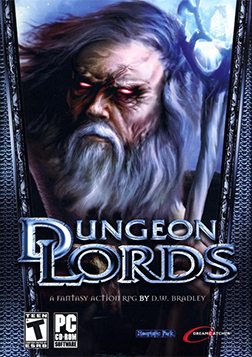
Dungeon Lords is an action role-playing game developed by Heuristic Park, originally published by DreamCatcher Interactive and Typhoon Games, and released in 2005. However, many features were left out from the original release in an effort to meet the release date. In 2006, they re-released the game as Dungeon Lords Collector's Edition with more complete features.

Arx Fatalis is a 2002 action role-playing game developed by Arkane Studios and released for Windows and Xbox. The game is played from a first-person perspective and is set on a world whose sun has failed, forcing the above-ground creatures to take refuge in caverns. The game's mechanics include the use of mouse gestures to cast spells. Arx Fatalis received mostly positive reviews from critics but was not commercially successful. In 2011, Arkane Studios released the game's source code under the GNU General Public License (GPL), though the game assets remain proprietary.

Gregory A. Kasavin is an American video game writer and designer at Supergiant Games. Before entering game development, Kasavin was the site director and executive editor at the gaming news website GameSpot for over ten years.
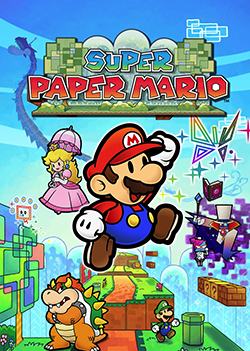
Super Paper Mario is a 2007 action role-playing game developed by Intelligent Systems and published by Nintendo for the Wii. It is the third installment in the Paper Mario series and the first Mario game on the Wii. The game follows Mario, Peach, Bowser, and Luigi as they attempt to collect Pure Hearts and stop Count Bleck and his minions from destroying the universe.

The Pinball of the Dead is a pinball video game developed by Sega's Wow Entertainment division and published by Sega in Japan and THQ in North America. It was released for the Game Boy Advance on June 19 and July 4, 2002, in North America and Japan, respectively. Based on Sega's The House of the Dead series of light gun games, particularly The House of the Dead and The House of the Dead 2, the game contains three tables and includes a "Challenge" mode. Full-motion video sequences and audio samples from previous games were also added. The game was first announced during the 2001 Nintendo Space World. Composer Hitoshi Sakimoto was involved with making the game's music.

Baldur's Gate: Dark Alliance is a 2001 action role-playing video game developed by Snowblind Studios and published by Interplay Entertainment subsidiary Black Rock Studios for the PlayStation 2 and the Xbox consoles, with High Voltage Software handling the GameCube port, and Magic Pockets developing the Game Boy Advance version. CD Projekt was developing a version for Microsoft Windows, but was ultimately cancelled. In 2021, a 4K port of the game was released for the Xbox One, PlayStation 4, PlayStation 5, Xbox Series X/S, Nintendo Switch and PC.

Persona 5 is a 2016 role-playing video game developed by P-Studio and published by Atlus. The game is the sixth installment in the Persona series, itself a part of the larger Megami Tensei franchise. It was released for PlayStation 3 and PlayStation 4 in Japan in September 2016 and worldwide in April 2017. It was published by Atlus in Japan and North America, and by Deep Silver in PAL territories. An enhanced version featuring new content, Persona 5 Royal, was released for PlayStation 4 in Japan in October 2019 and worldwide in March 2020. It was published by Atlus in Japan and worldwide by its parent company Sega. Persona 5 Royal was later released for Nintendo Switch, PlayStation 5, Windows, Xbox One, and Xbox Series X/S in October 2022.
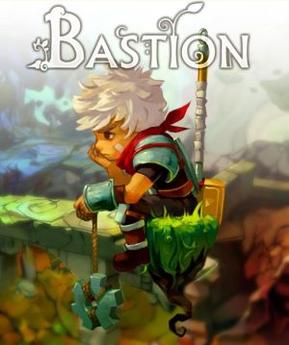
Bastion is an action role-playing video game developed by independent developer Supergiant Games and originally published in 2011 by Warner Bros. Interactive Entertainment. In the game, the player controls "the Kid" as he moves through floating, fantasy-themed environments and fights enemies of various types. It features a dynamic voiceover from a narrator, and is presented as a two-dimensional game with an isometric camera and a hand-painted, colorful art style. Bastion's story follows the Kid as he collects special shards of rock to power a structure, the Bastion, in the wake of an apocalyptic Calamity.
While the early history and distinctive traits of role-playing video games (RPGs) in East Asia have come from Japan, many video games have also arisen in China, developed in South Korea, and Taiwan.
Supergiant Games, LLC is an American independent video game developer and publisher based in San Francisco. It was founded in 2009 by Amir Rao and Gavin Simon, and is known for the games Bastion, Transistor, Pyre, and Hades.
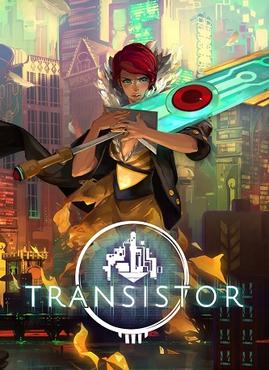
Transistor is an action role-playing video game developed and published by Supergiant Games. The game was released in May 2014 for Microsoft Windows and PlayStation 4, for OS X and Linux in October 2014, and iOS devices in June 2015. Transistor sold over one million copies across all platforms by December 2015.

Darren Korb is an American songwriter, composer, and voice actor. Korb is best known for writing the music featured in Bastion, Transistor, Pyre and Hades, all of which were developed by indie developer Supergiant Games. Korb also voice-acted in the latter two games, including providing the voice for Zagreus, the protagonist of Hades.
Paper Mario is a video game series and part of the Mario franchise, developed by Intelligent Systems and produced by Nintendo. It combines elements from the role-playing, action-adventure, and puzzle genres. Players control a paper cutout version of Mario, usually with allies, on a quest to defeat the antagonist, primarily Bowser. The series consists of six games and one spin-off; the first, Paper Mario (2000), was released for the Nintendo 64, and the most recent, Paper Mario: The Origami King (2020), for the Nintendo Switch.

Hades is a 2020 roguelike video game developed and published by Supergiant Games. It was released for macOS, Nintendo Switch, and Windows following an early access release in December 2018. It was later released for PlayStation 4, PlayStation 5, Xbox One, and Xbox Series X/S in August 2021, and will be released for iOS in March 2024 through Netflix Games.
Jen Zee is an American artist and the art director for Supergiant Games. She joined Supergiant Games in March 2010 as a contractor on Bastion and was quickly brought on as the full time art director for the company. Her art has received positive accolades from critics, and for her work on Hades, she received numerous awards, including the 2021 BAFTA Games Award for Artistic Achievement.
